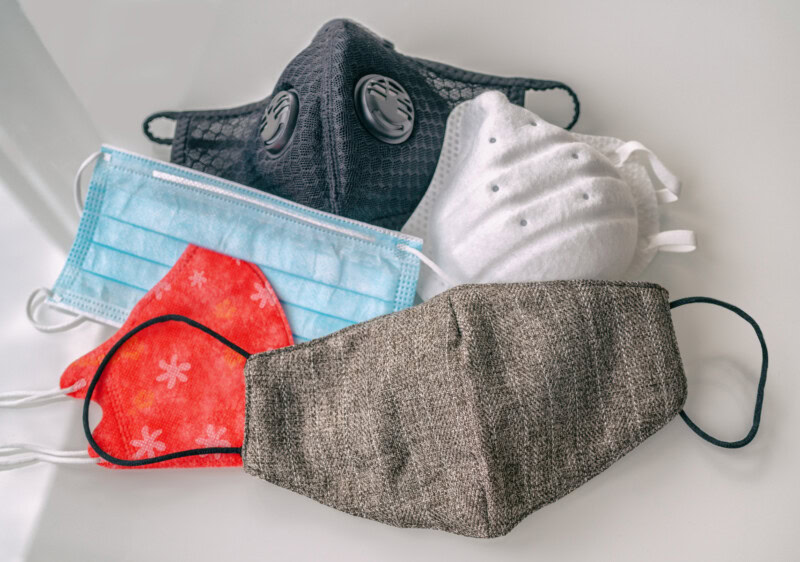Since the earliest days of the pandemic, wearing a face covering has been one of the most consistent means of preventing the spread of COVID-19. But not all masks are created equal. How do you pick the best face covering for your situation? Here are some tips from the CDC and CTEH experts.
Filtering Facepiece Respirator
A respirator, sometimes called a dust mask, uses negative pressure and a filter as integral parts of the facepiece. Common designations for these masks include N95[PH1] and FFP2. These types of masks provide superior protection, but only when properly fitted to the wearer, and obstructions like facial hair can also inhibit their efficiency. Additionally, the secure fit and superior filtration of these types of masks can cause breathing difficulty when worn for long periods of time.
Multi-layered Surgical Masks
A surgical mask, or face mask, is a loose-fitting, disposable device that creates a physical barrier between the mouth and nose of the wearer and potential contaminants in the immediate environment. These masks do not create a seal around the nose or mouth, but they have been shown to be more effective at controlling respiratory droplet spread than one- or two-layer cloth masks. In general, assuming the supply chain isn’t critical, multi-layered, non-woven surgical masks are recommended for daily use.
Cloth Face Coverings
A cloth face covering (sometimes just called a face covering) is a simple barrier that helps prevent respiratory droplets from traveling into the air and onto other people when the wearer coughs, sneezes, or talks. Cloth face coverings are highly variable, and some material is more effective than other. General recommendations for material include cotton or other non-synthetic fiber consisting of a tight cloth weave, and consisting of at least two layers. A cloth face covering should be washed daily. Provided good material and correct care, cloth face coverings are also recommended for daily use.
Layering and Fitting Masks
A medical procedure mask can be layered underneath a cloth mask for improved fit and filtration. However, a medical procedure mask should not be layered underneath a second medical procedure mask. Using a mask fitter, brace, or nose wire can also help to improve fit.
What Masks Aren’t Recommended?
According to the CDC, there are some situations where individuals shouldn’t wear a mask, such as children under 2 years of age. The CDC doesn’t recommend using masks for source control if they have an exhalation valve or vent. Additionally, since masks can either be disposable or require cleaning throughout the day, users should keep additional masks around in case one needs to be replaced.
Finally, a study in 2020 showed that single-layered, fleece neck gaiters performed poorly in filtering droplets expelled during speech, and potentially even caused larger respiratory droplets to disperse into smaller droplets which could remain airborne longer than usual.
Need help ensuring the right protection for your workers? CTEH can help. Visit our website for more information.




